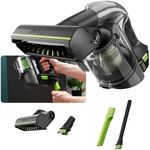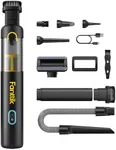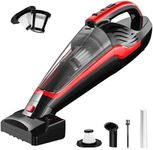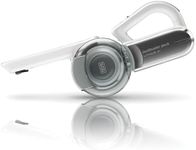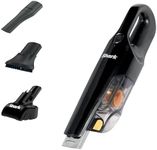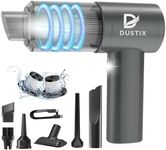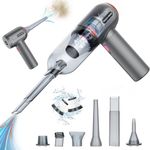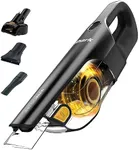Buying Guide for the Best Handheld Car Vacuum
Choosing the right handheld car vacuum can make cleaning your vehicle a breeze. These compact devices are designed to reach tight spaces and remove dirt, dust, and debris from your car's interior. When selecting a handheld car vacuum, consider the specific needs of your vehicle, such as the type of debris you typically encounter and the areas you need to clean. Understanding the key specifications will help you make an informed decision and ensure you get a vacuum that meets your cleaning requirements.Suction PowerSuction power is a measure of how effectively a vacuum can pick up dirt and debris. It's important because stronger suction means more efficient cleaning, especially for stubborn dirt or pet hair. Suction power is often measured in air watts (AW) or volts. For light cleaning tasks, a lower suction power might suffice, but for more thorough cleaning, especially in cars with pets or heavy dirt, a higher suction power is preferable. Consider your typical cleaning needs to determine the right level of suction power for you.
Battery LifeBattery life indicates how long the vacuum can operate on a single charge. This is crucial for ensuring you can complete your cleaning tasks without frequent recharging. Battery life can range from 10 to 30 minutes or more. If you have a larger vehicle or plan to use the vacuum for extended periods, look for models with longer battery life. For quick touch-ups, a shorter battery life may be sufficient. Assess how long you typically spend cleaning your car to choose the right battery life.
Weight and PortabilityWeight and portability refer to how easy it is to handle and maneuver the vacuum. A lighter vacuum is easier to carry and use for extended periods, which is important for reaching all areas of your car. Handheld vacuums typically weigh between 2 to 5 pounds. If you prioritize ease of use and comfort, opt for a lighter model. However, if you need more power and features, you might have to compromise slightly on weight. Consider your strength and how long you plan to use the vacuum at a time.
Dustbin CapacityDustbin capacity is the amount of debris the vacuum can hold before needing to be emptied. A larger capacity means less frequent emptying, which is convenient for larger cleaning jobs. Capacities can range from 0.3 to 1 liter. If you often clean large amounts of debris or have a bigger vehicle, a larger dustbin might be beneficial. For smaller cars or quick clean-ups, a smaller dustbin may be adequate. Think about how much debris you typically collect to decide on the right capacity.
Attachments and AccessoriesAttachments and accessories enhance the vacuum's versatility by allowing it to clean different surfaces and reach tight spaces. Common attachments include crevice tools, brush heads, and upholstery tools. These are important for tackling various cleaning challenges, such as cleaning between seats or removing pet hair. If your car has a lot of nooks and crannies or specific cleaning needs, look for a vacuum with a variety of attachments. Consider the specific areas and types of dirt you need to address when choosing attachments.
Filter TypeThe filter type affects the vacuum's ability to trap dust and allergens. High-efficiency particulate air (HEPA) filters are particularly effective at capturing small particles, which is important for maintaining air quality. Some vacuums have washable filters, which can be more economical and environmentally friendly. If you or your passengers have allergies, a vacuum with a HEPA filter might be a good choice. Consider how important air quality is to you and whether you prefer a washable filter for convenience.
